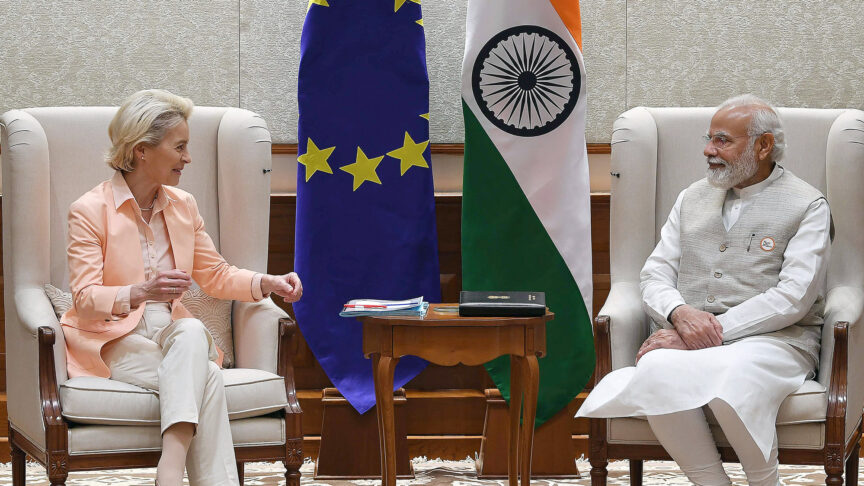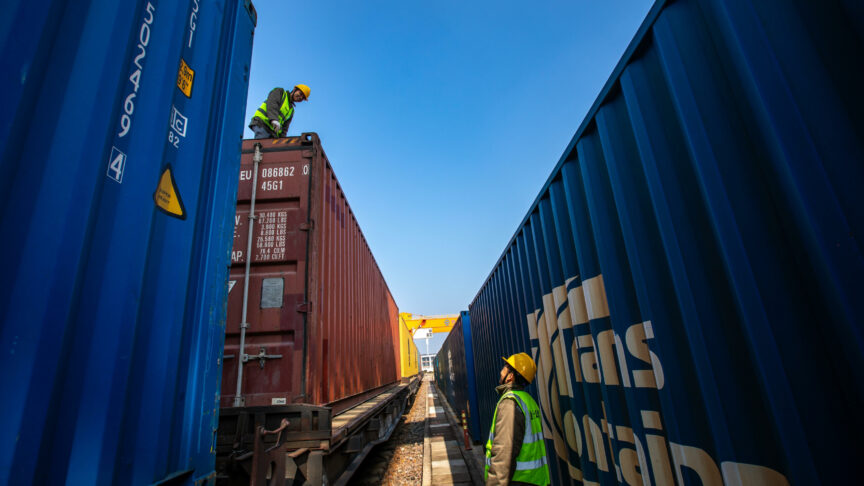China’s silk road to nowhere?
China will face huge challenges in making the New Silk Road a reality.
Since 2013, China has been hyping its New Silk Road project. It launched a massive public relations campaign – which even held out the prospect of “Silk Road Tourism” – to turn the idea of a global transportation network into an incentive to cooperate with China and an expression of an Asian “community of destiny”. But China will face huge challenges in making the New Silk Road a reality. One of the places where China had begun re-construction of ancient Silk Road links early on is Pakistan. But after decades, progress has been limited. Despite China’s commitment to the Silk Road project, it’s not clear that it is going anywhere.
The “Belt and Road” initiative” includes two elements, a Silk Road Economic Belt and the 21st Century Maritime Silk Road; the aim is to create a northern road corridor and a southern maritime corridor to connect China with Europe. Beginning with Jiang Zemin in 1996, the Silk Road narrative has been long used by Chinese leaders to increase China’s – mainly economic – cooperation with other countries in Central Asia, South Asia and the Middle East, Africa – and in Europe.[1] Since 2013, the new Chinese leadership under Xi Jinping has developed this narrative that integrates existing projects in two mega “Belt and Road” initiatives.
The Silk Road initiative has also given a new impetus to China’s infrastructure development in Pakistan. China’s construction of the Karakoram Highway/Road from China to Pakistan dates back to the beginning of the 1970s – long before the “Silk Road” hype of the last few months. China has financed and developed the Gwadar port on the Arabian Sea since the 1990s. Since 2013, China and Pakistan have been planning a China-Pakistan Economic Corridor, which connects Gwadar with China's western Xinjiang region. According to Chinese president Xi Jinping, the Economic Corridor is “a major project of the ‘Belt and Road’ initiative”.[2]
However, despite this long record of joint cooperation, results are overdue– mainly due to the precarious security situation within Pakistan. Gwadar port is still under construction (it is set to start operation this year). The Karakoram-Highway also remains under construction and is just shaping up to become a true highway (it is expected to re-open end of this year). When Xi cancelled his planned visit to Pakistan due to the instability and ongoing turmoil last September, some saw relations as being severely damaged and expected progress on the Economic Corridor to be delayed further.
Xi put the China-Pakistan Economic Corridor at the centre of the two countries’ bilateral cooperation.
Xi corrected that perception when he paid his first state visit to Pakistan in April and brought with him deals worth billions. In total, China announced an investment of $45 billion in Pakistan’s energy and infrastructure construction.[3]Xi put the China-Pakistan Economic Corridor at the centre of the two countries’ bilateral cooperation, which also includes co-operation to strengthen security – the greatest obstacle in Pakistan. A day before Xi’s visit to Pakistan, the foundation of a new joint Pakistan-China think tank to research and develop the corridor was launched at a conference on the Chinese island of Hainan. Xi’s attempt to finally push forward long-planned projects in Pakistan show that China is getting serious about its belts and roads.
As this history of co-operation between China and Pakistan illustrates, the idea of renewing the Silk Road is nothing new. China has long invested in ports in strategic locations around Asia and elsewhere. In recent years, it funded the construction of Hambantota port in Sri Lanka and has been supporting the development of Colombo port in Sri Lanka and Chittagong port in Bangladesh. In Europe, Chinese state-owned enterprises have minority stakes in the Greek port of Piraeus and operate terminals in the Netherlands, Italy and Spain.
China has also long invested in railways. The Trans-Siberian Railway, built almost a century ago, connects Moscow with Northeast Asia, via China (Manchuria) to Vladivostok. Today, more and longer railways are being operated and used for transporting goods between China to Russia (via Kazakhstan) and on to Europe. For example, railways connect Chongqing and Duisburg since 2011; Yiwu and Madrid since 2014; and Chengdu and Lodz. Last year, China and Hungary and Serbia announced the construction of a railway line from Belgrade to Budapest as part of the New Silk Road.
China has multiple reasons to push these initiatives: geo-strategy, access to raw materials such as oil, new markets, and jobs.
China has multiple reasons to push these initiatives in Asia, the Middle East, Africa, and Europe: geo-strategy, access to raw materials such as oil, and new markets. It also creates jobs: tens of thousands of Chinese workers work on projects in Pakistan – up to 20,000 at Karakoram alone.
Who will build all these roads, railways and ports, and who will profit, are obvious questions. But it might also be worth asking who is going to need new transportation networks. Most goods travel around the globe via sea, as it is cheaper and logistically simpler, although much slower, than rail or air transport.[4] Although railways would half the time sea transport takes, there are numerous obstacles that have to be overcome to build them: different gauge systems; financial sharing; an unstable security environment. China may make a short-term profit by investing in infrastructure but long-term viability is questionable if no one dares to use the infrastructure. In addition, more goods travel from China to Europe than vice versa.[5] The benefit of rail transport will thus also depend on the demand on both ends.
Whether or not China’s plans to build a New Silk Road will be implemented some day, the countries China aims to do Silk Road business with will doubtlessly profit from the initiative. But instead of jumping on every opportunity China offers to do business, it might be worth examining them in more detail. Which of China’s projects only serve its own short- or long-term interests and which will also be beneficial to others? These are the questions Europeans should ask themselves before agreeing to become the end of China’s Silk Road.
[1]See Alessandro Arduino, “The new Silk Road”, ECRAN, May 2014, available at http://eeas.europa.eu/china/docs/division_ecran/ecran_is114_paper_91_the_new_silk_road_alessandro_arduino_en.pdf.
[2]Xi’s speech available at http://www.dailytimes.com.pk/national/19-Apr-2015/pak-china-dosti-zindabad.
[3]Associated Press, 21 April 2015, http://indianexpress.com/article/world/asia/chinese-president-applauds-pakistans-anti-terror-efforts/?SocialMedia.
[4]“The price he charged customers for rail was $8,000 per FEU. That same FEU would cost $3,000 via ocean freight and by air, at $3.85 per kg would cost $37,000. Rail would take between 23 and 25 days, ocean 50-55 days and air freight around 10 days.” See http://www.joc.com/international-logistics/china-europe-rail-services-starting-turn-shippers%E2%80%99-heads_20150311.html.
The European Council on Foreign Relations does not take collective positions. ECFR publications only represent the views of their individual authors.


